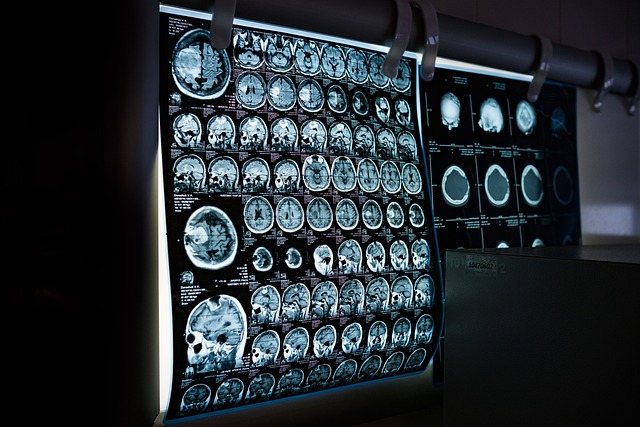Why Triple Negative Breast Cancer Requires Special Attention
Triple negative breast cancer represents a unique and challenging form of breast cancer that affects thousands of women worldwide, including in Indonesia. Unlike other breast cancer types, this variant lacks three common receptors that typically guide treatment decisions, making it more difficult to treat with standard hormone therapies. Understanding what makes this cancer different is crucial for patients, families, and healthcare providers navigating diagnosis and treatment options.

Triple negative breast cancer accounts for approximately 10-15% of all breast cancer diagnoses globally. This particular subtype has distinct characteristics that set it apart from hormone receptor-positive or HER2-positive breast cancers. While medical advances continue to improve outcomes, this form of cancer remains one of the most aggressive and requires specialized treatment approaches tailored to its unique biology.
This article is for informational purposes only and should not be considered medical advice. Please consult a qualified healthcare professional for personalized guidance and treatment.
Why Is Triple Negative Breast Cancer Different from Others?
The defining characteristic of triple negative breast cancer lies in what it lacks rather than what it possesses. This cancer type tests negative for estrogen receptors, progesterone receptors, and human epidermal growth factor receptor 2 (HER2). These three receptors are typically present in other breast cancer types and serve as targets for hormone therapy and HER2-targeted treatments. Without these receptors, doctors cannot use common medications like tamoxifen, aromatase inhibitors, or trastuzumab that have proven effective for other breast cancer patients.
This absence of targetable receptors means treatment options are more limited. Triple negative breast cancer tends to grow and spread more quickly than other types, often appearing in younger women and those with BRCA1 gene mutations. The cancer cells are typically higher grade, meaning they look very different from normal cells and divide more rapidly. These factors contribute to a more aggressive disease course that requires immediate and intensive treatment.
What Sets Triple Negative Breast Cancer Apart?
Beyond the receptor status, several biological and clinical features distinguish triple negative breast cancer from other subtypes. This cancer type has a higher likelihood of spreading to distant organs, particularly the lungs and brain, rather than bones which are more common metastatic sites for hormone-positive cancers. The pattern of recurrence also differs, with most recurrences happening within the first three to five years after initial treatment, whereas hormone-positive cancers can recur decades later.
The molecular profile of triple negative breast cancer is highly heterogeneous, meaning it encompasses several distinct subtypes at the genetic level. Researchers have identified at least six molecular subtypes within the triple negative category, each with different characteristics and potential treatment responses. This diversity makes developing universal treatment protocols challenging and highlights the need for personalized medicine approaches.
Patients with triple negative breast cancer often experience different symptoms and progression patterns. The tumors tend to be larger at diagnosis and are more likely to have already spread to lymph nodes. Despite these challenges, some triple negative cancers respond remarkably well to chemotherapy, particularly neoadjuvant chemotherapy given before surgery. Achieving a complete pathological response, where no cancer cells remain after treatment, is associated with excellent long-term outcomes.
How Does Triple Negative Breast Cancer Differ from Other Types?
Treatment approaches for triple negative breast cancer differ significantly from those used for other breast cancer types. Since hormone therapy and HER2-targeted drugs are ineffective, chemotherapy remains the primary systemic treatment. Modern chemotherapy regimens often combine multiple drugs to maximize effectiveness. Recent advances have introduced immunotherapy drugs like pembrolizumab for certain triple negative breast cancer patients, particularly those whose tumors express PD-L1 protein.
Surgery and radiation therapy play crucial roles in managing triple negative breast cancer, similar to other types. However, the timing and sequencing of treatments may differ. Many oncologists recommend neoadjuvant chemotherapy before surgery to shrink tumors and assess treatment response. This approach provides valuable information about cancer biology and helps guide additional treatment decisions.
The prognosis for triple negative breast cancer has historically been less favorable than for hormone-positive cancers, but outcomes continue to improve with advancing research and treatment options. Early detection remains critical, as smaller tumors confined to the breast have significantly better outcomes. Genetic testing for BRCA mutations is particularly important for triple negative breast cancer patients, as these mutations are more common in this subtype and may influence treatment decisions, including the consideration of PARP inhibitor medications.
Research into triple negative breast cancer continues at a rapid pace, with numerous clinical trials investigating new targeted therapies, immunotherapy combinations, and novel drug classes. Scientists are working to identify specific vulnerabilities within different molecular subtypes that could lead to more effective, personalized treatments. Understanding the unique characteristics of triple negative breast cancer helps patients and healthcare teams make informed decisions and maintain realistic expectations throughout the treatment journey.
Conclusion
Triple negative breast cancer stands apart from other breast cancer types due to its lack of targetable receptors, aggressive behavior, and limited treatment options. However, ongoing research continues to reveal new insights into this complex disease, leading to improved therapies and outcomes. While challenges remain, advances in chemotherapy, immunotherapy, and targeted treatments offer hope for patients facing this diagnosis. Early detection, comprehensive treatment, and close medical follow-up remain essential components of managing triple negative breast cancer effectively.




